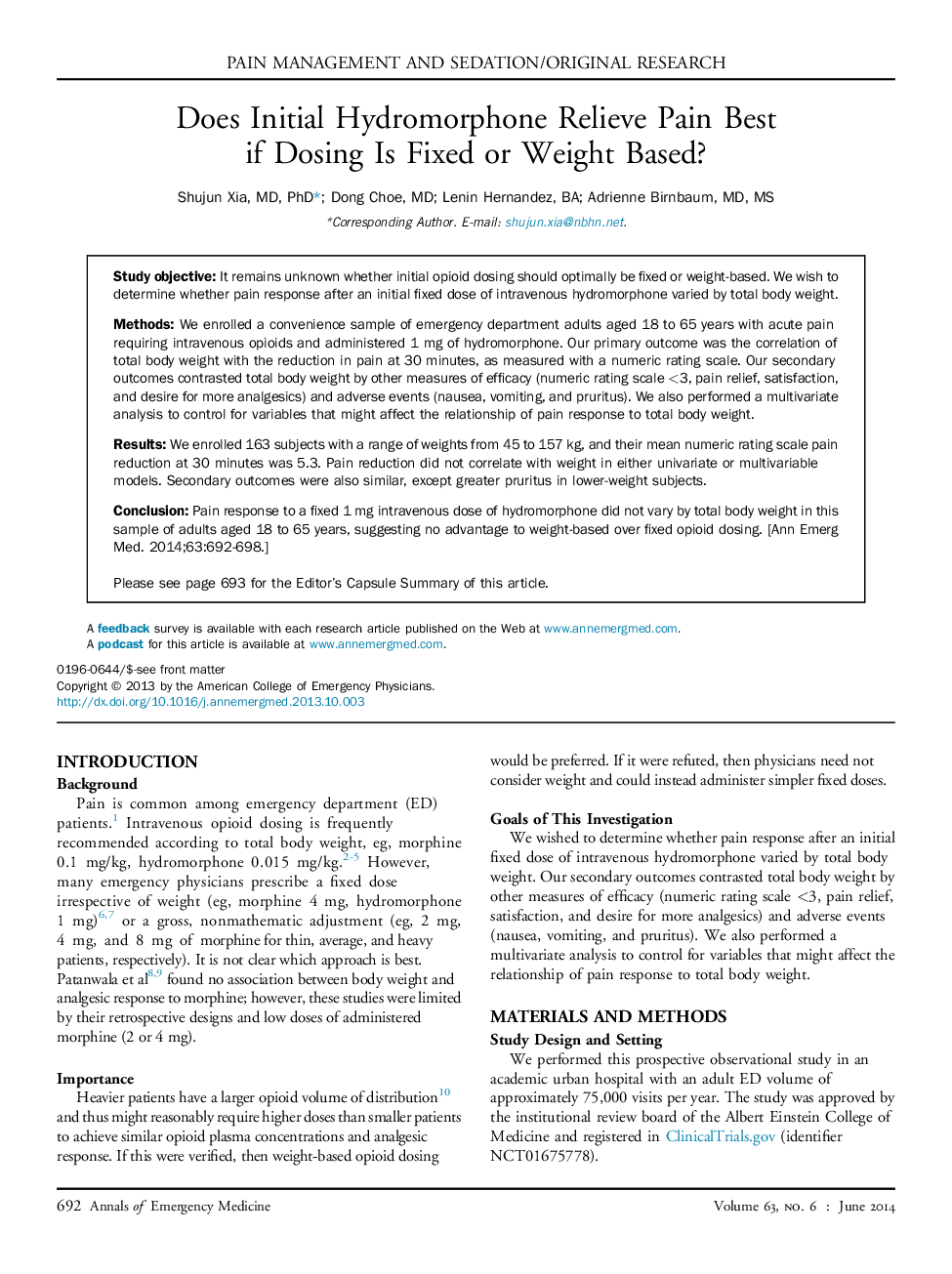| Article ID | Journal | Published Year | Pages | File Type |
|---|---|---|---|---|
| 6081071 | Annals of Emergency Medicine | 2014 | 11 Pages |
Study objectiveIt remains unknown whether initial opioid dosing should optimally be fixed or weight-based. We wish to determine whether pain response after an initial fixed dose of intravenous hydromorphone varied by total body weight.MethodsWe enrolled a convenience sample of emergency department adults aged 18 to 65 years with acute pain requiring intravenous opioids and administered 1 mg of hydromorphone. Our primary outcome was the correlation of total body weight with the reduction in pain at 30 minutes, as measured with a numeric rating scale. Our secondary outcomes contrasted total body weight by other measures of efficacy (numeric rating scale <3, pain relief, satisfaction, and desire for more analgesics) and adverse events (nausea, vomiting, and pruritus). We also performed a multivariate analysis to control for variables that might affect the relationship of pain response to total body weight.ResultsWe enrolled 163 subjects with a range of weights from 45 to 157 kg, and their mean numeric rating scale pain reduction at 30 minutes was 5.3. Pain reduction did not correlate with weight in either univariate or multivariable models. Secondary outcomes were also similar, except greater pruritus in lower-weight subjects.ConclusionPain response to a fixed 1 mg intravenous dose of hydromorphone did not vary by total body weight in this sample of adults aged 18 to 65 years, suggesting no advantage to weight-based over fixed opioid dosing.
